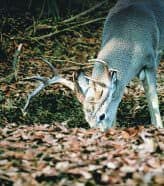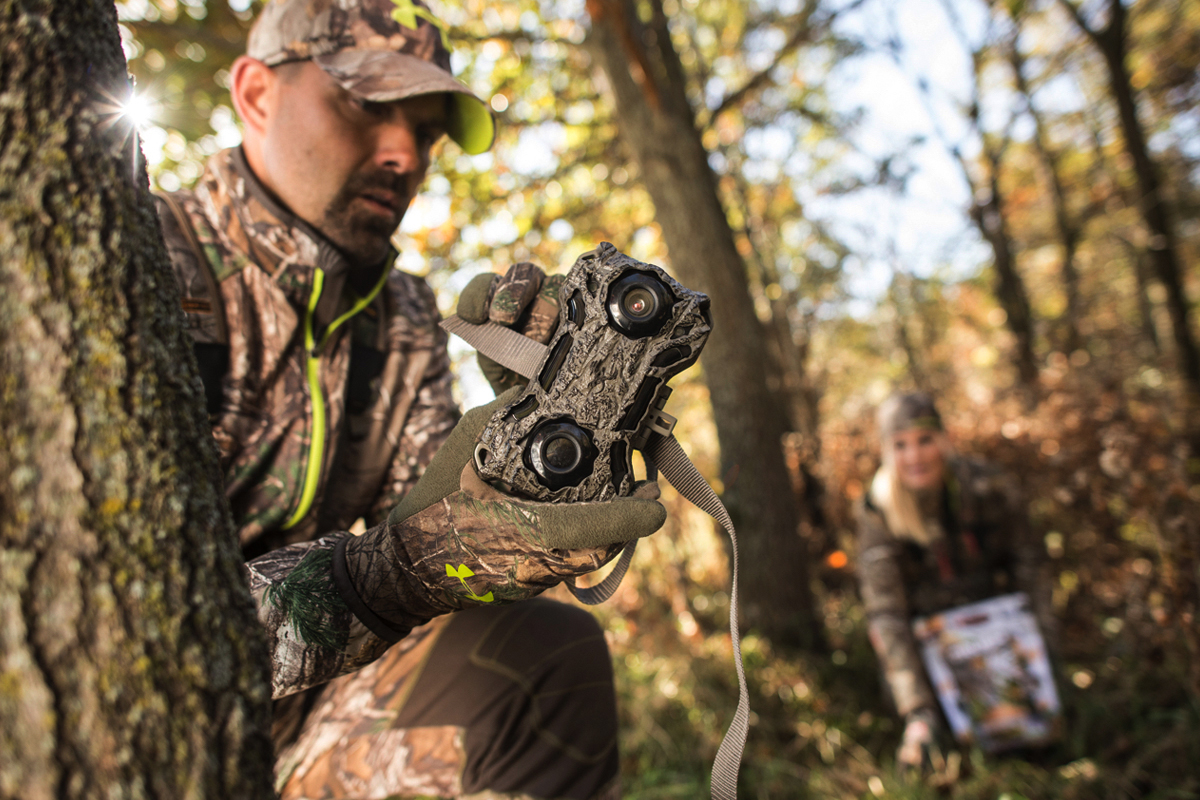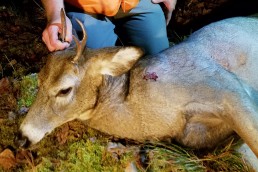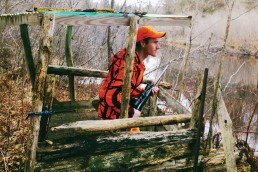Deer Season Prep: Feed What They Need
SHARE THIS POST
Effective herd monitoring and overall increased herd health are two good reasons to create mineral supplement sites for white-tailed deer. And while the practice of baiting during the actual hunting season is legal in some states, the creation of mineral supplement sites for that specific purpose is beyond the scope of this article.
Effective mineral supplementation involves the practice of placing high-mineral-content products in locations where they can be readily located and consumed by deer. These products take many forms, but the most popular are compressed blocks that deer lick and the granulated powders that mix with the soil.

Formulations differ as well. Most products marketed as mineral supplements contain one or more of the key minerals believed to aid in antler growth or that have other nutritional benefits to whitetails. These elements are sodium, calcium, phosphorus and magnesium. Manufacturers may add other contents to make their mineral supplementation products more palatable, more nutritional or easier to find.
Know your game laws
Anyone considering the use of any deer attractant should have a complete understanding of their state’s game laws. Some, like Illinois, outlaw the practice of feeding wild deer outright. Others allow the practice, but have very specific requirements dictating how and when all traces of any attractant (considered bait) must be removed prior to hunting season. Such laws are often confusing, so consider contacting your state’s fish and wildlife law enforcement agency if you have any questions.
Why?
As previously mentioned, supplement sites provide deer with helpful minerals that may be absent or lacking in their natural diet. Science has proven that whitetails have the ability to store excess calcium and phosphorus in their bones and draw upon those reserves when needed. Additionally, mineral supplementation in domestic livestock has revealed documented health benefits relative to appetite, digestion and reproduction. That said, a variety of opinions exist regarding the benefits of mineral supplementation as it relates to antler growth in wild white-tailed deer. The fact that deer use mineral supplement sites so readily in so many locations, however suggests to most hunters and property managers that the practice is a worthwhile and beneficial undertaking.
Mineral supplementation is also employed to concentrate deer near game cameras for ongoing monitoring—a critical aspect of game management. Hunters and property managers want to observe antler growth, deer numbers and overall herd health. And, a well-executed site is a great way to concentrate deer for this purpose, while providing nutrition.
When?
Deer usually begin using mineral sites in early spring and may continue to use them through early fall. This period of heavy mineral use coincides with the fawn-rearing and antler-growing periods. For this reason, most hunters and managers establish their mineral sites in the springtime.
Where?
Locate mineral sites based on two primary considerations: First, select areas that make it easy for deer to visit, offering them a degree of security. Consider sites close to prime bedding areas and the “primary” trails between those bedding areas, and food or water sources near trails that intersect. Second, consider your soils. Rocky or clay soils are best for powdered or granular products. Sandy soils leach minerals faster, which means they must be applied more frequently. Solid blocks and licks can be placed anywhere.
Are you enjoying this post?
You can be among the first to get the latest info on where to go, what to use and how to use it!
Location can also involve your camera placement. The distance from your camera to the far side of your mineral site should be well inside the camera’s effective flash range. Place your camera so small branches or other items that might sway in the wind won’t trigger its sensor.

Not all cameras are created equal. High-resolution models with invisible IR flash, generous range and long battery life are top choices for mineral site monitoring. Models with video capability will provide additional helpful information, like the directions from which deer arrive at and depart from your site.
What?
Phosphorus, calcium, magnesium and sodium are said to be the most beneficial minerals for deer in most areas. A product like Evolved Habitats’ Rack-Up Trophy Class is a good starting point. This new mineral attractant contains high concentrations of phosphorus, magnesium and calcium.
To make sure deer find and use your mineral site, consider mixing in an attractant like Wildgame Innovations’ new Persimmon Crush. It combines the natural attracting fragrance and flavor of real persimmons with an ultra-high 16 percent fat content and carbohydrate blend to create a highly palatable attractant and nutritional supplement.
Adding a source of sodium will maximize the frequency and duration of deer visits to your sites. Evolved Habitats’ new Molasses Brick uses real molasses to appeal to a deer’s senses of smell and taste, while sodium and other trace minerals play to their instincts. That said, biologists maintain that excess sodium can have negative effects on nutrition. Deer receive ample sodium from natural green vegetation in many areas, so consider offering sodium to your deer herd when they need it most—from the end of hunting season until the spring green-up.
How?
Once you’ve determined where to locate your mineral sites and their content, they’re relatively simple to create. Most granulated products are designed to mix into the soil. Simply remove leaf litter and other debris to expose the soil, and then dig a shallow hole or pit; a few inches of depth is sufficient. The idea is to contain the product at your chosen site and eliminate runoff. After pre-mixing any separate products, dump the mix into the pit and lightly rake it into the top few inches of soil.
Maintenance
Physical evidence at sites and game cameras will tell you the degree at which they are being used. Give them a couple weeks. If use is light, consider adding additional attractant products. If it’s heavy, refresh sites with new mineral products as necessary. Most hunters and game managers check and refresh mineral sites every 3 to 5 weeks after they become established, but set your own reasonable schedule. Do what’s necessary to keep deer visiting, but avoid adverse effects to your deer’s natural behaviors. Don’t return too frequently, and consider limiting visits to midday.
Finally, use due diligence as hunting season approaches. Again, know your state’s game laws with respect to feeding or baiting wildlife and make sure your mineral sites are removed in accordance with those laws prior to hunting anywhere in their vicinity.
MWO
SHARE THIS POST
You may also like...
Did you enjoy this post?
You can be among the first to get the latest info on where to go, what to use and how to use it!
Lance Davidson
MidWest Outdoors works with more than 200 outdoor experts each year, who contribute articles based on their areas of expertise. MidWest Outdoors magazine offers more fishing and hunting articles than any other publication!



